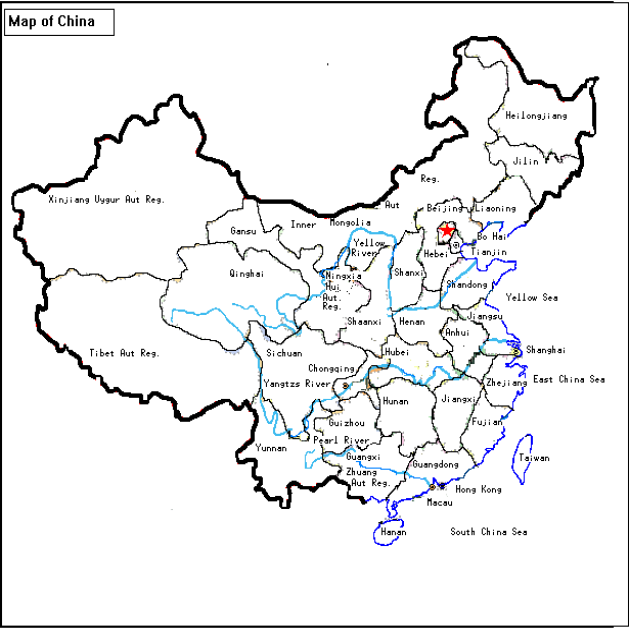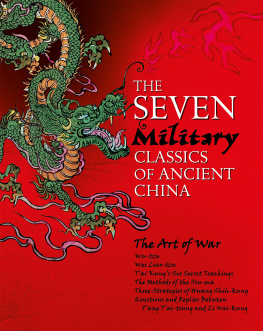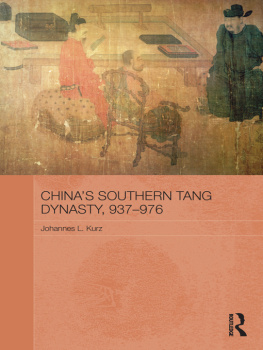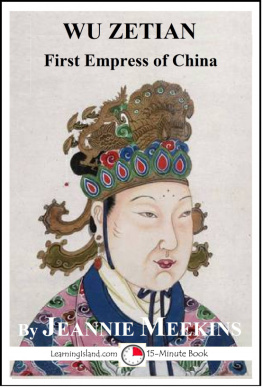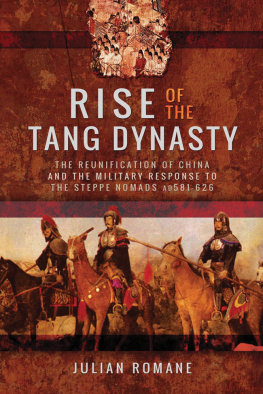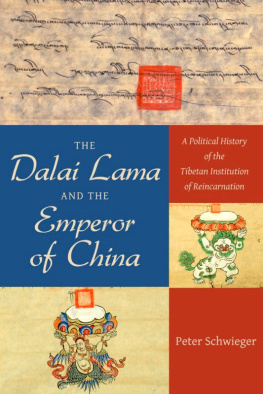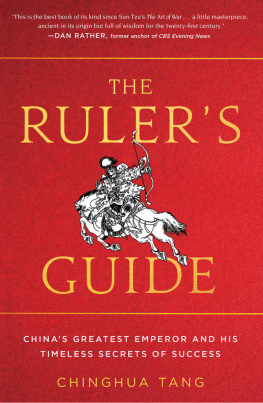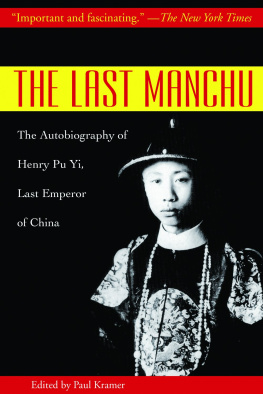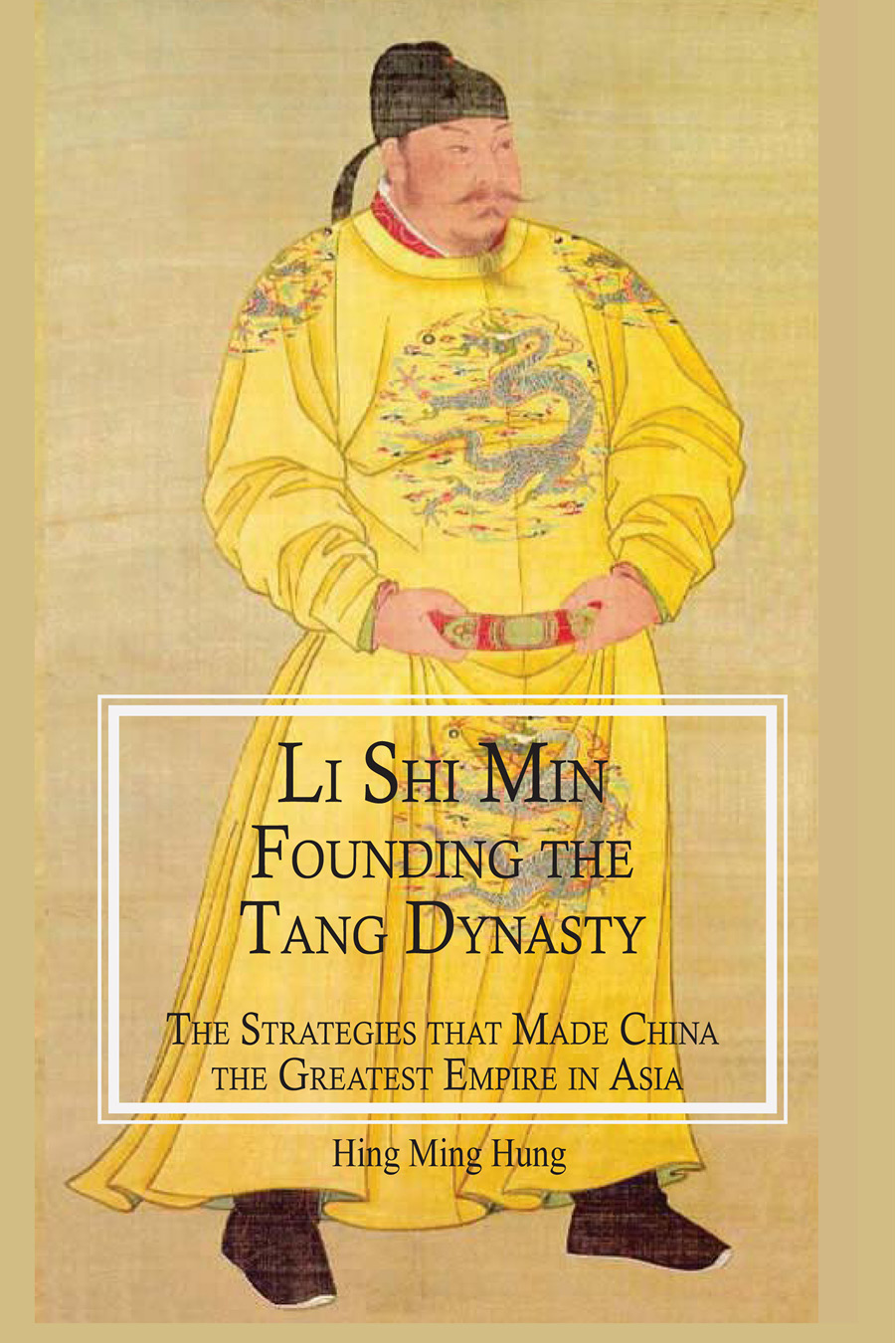Li Shi Min ,
Founding the Tang Dynasty
The Strategies that Made China the Greatest Empire in Asia
Hing Ming Hung
Algora Publishing
New York
2013 by Algora Publishing.
All Rights Reserved
www.algora.com
No portion of this book (beyond what is permitted by
Sections 107 or 108 of the United States Copyright Act of 1976)
may be reproduced by any process, stored in a retrieval system,
or transmitted in any form, or by any means, without the
express written permission of the publisher.
Library of Congress Cataloging-in-Publication Data
Hung, Hing Ming.
Li Shi Min, Emperor Taizong of the Tang Dynasty: the emperor who made China the greatest empire in Asia / Hung Hing Ming.
pages cm
Includes bibliographical references and index.
ISBN 978-0-87586-978-0 (soft cover : alk. paper) ISBN 978-0-87586-979-7 (hard cover : alk. paper) ISBN 978-0-87586-980-3 (ebook) 1. Tang Taizong, Emperor of China, 597-649. 2. Tang Taizong, Emperor of China, 597-649Military leadership. 3. EmperorsChinaBiography. 4.
ChinaHistoryTang dynasty, 618-907. 5. ChinaHistory, Military221
B.C.-960 A.D. I. Title.
DS749.42.T35H86 2013
951.017092dc23
[B]
2013005039
Printed in the United States
Introduction
This book is about Li Shi Min (599649), Emperor Taizong of the Tang Dynasty (618907), who is regarded as the best emperor in Chinese history. Under his reign (626649), China entered into a period of peace and prosperity. He made China the greatest empire in Asia of that time. He was respected by the khans of the khanates in the north and the northwest around China of that time as Heavenly Khan. He set a very good example for the later emperors of different dynasties.
By the end of the Sui Dynasty (589618), under the rule of the cruel emperor Yang Guang of the Sui Dynasty, rebellions broke out all over China and China was in great chaos. In 617 Li Shi Min, who was just eighteen years old, put forward a suggestion to his father Li Yuan, who was the general in charge of the military and civil affairs of Taiyuan, to march to Changan, the capital, while Emperor Yang Guang was far away in the east. His father accepted his suggestion and commanded the army to march from Taiyuan to Changan. Li Shi Min commanded an army to march ahead of the main force. Li Yuan commanded the main force and captured Changan. Thus Li Yuan successfully overthrew the Sui Dynasty and established the Tang Dynasty, becoming its first emperor. Li Shi Min had made the greatest contributions in overthrowing the Sui Dynasty and in establishing the Tang Dynasty.
At the beginning of the Tang Dynasty, many parts of China were still occupied by warlords and local strongmen. In 618, Li Shi Min commanded an army to march to the northwest and fought against Xue Ren Gao, the Emperor of Qin, who occupied the northwest part of China. Li Shi Min won. In 620, he carried out a northern expedition against Liu Wu Zhou, who occupied the area east of the Yellow River. He won again, and drove Liu Wu Zhou to the area of the Eastern Turkic Khanate in the north. In July 620, Li Shi Min commanded an army to march to Luoyang, the eastern capital of the Sui Dynasty, to deal with Wang Shi Chong, Emperor of Zheng. In March of the following year, Dou Jian De, the Emperor of Xia, who occupied the area north of the Yellow River, led a great army to rescue Wang Shi Chong. In May 621, Li Shi Min defeated Dou Jian Des army and captured him. In the same month Wang Shi Chong surrendered and Li Shi Min occupied Luoyang. In March 622, Li Shi Min put down the rebellion of Liu Hei Ta in the area north of the Yellow River. Li Shi Min is considered to have made the greatest contributions in the unification of China.
Li Shi Mins elder brother Li Jian Cheng, the Crown Prince, and Li Shi Mins younger brother Li Yuan Ji envied Li Shi Min because of his great accomplishments. The two brothers colluded with each other to frame Li Shi Min in front of Emperor Li Yuan, and even plotted to murder him. Urged by the ministers and generals under him, Li Shi Min laid an ambush at Xuanwu Gate of the palace and killed Li Jian Cheng and Li Yuan Ji on 4 June 626. In August 626, Emperor Li Yuan passed the throne to Li Shi Min and so he ascended the throne of the Tang Dynasty.
Emperor Li Shi Min achieved many great political and military goals. He upheld the principle of putting the interest of the people first; he practiced wise governance and showed grace to the people. He appointed wise and capable officials to responsible positions. He even appointed those who had once been hostile to him to high positions. Wei Zheng, who had been a staff under Li Jian Cheng and once advised Li Jian Cheng to get rid of Li Shi Min, was appointed to take charge of the secretariat work of the emperor. In this position Wei Zheng gave Li Shi Min much good advice. Even Li Jing, who had heard that Li Shi Mins father Li Yuan was going to rebel against the Sui Dynasty and had wanted to reveal this to Emperor Yang Guang of the Sui Dynasty, was appointed as the minister of war. He later played an important role in conquering the Eastern Turkic Khanate and Tuyuhun Khanate. Yuchi Jing De, who had once fought against Li Shi Min, was appointed great general of the Tang army. He was essential in the wars against the warlords and local strongmen. Li Shi Min had many wise ministers and generals around him. They were: Zhangsun Wu Ji, Fang Xuan Ling, Li Ji, Du Ru Hui and Chu Sui Liang. They helped Li Shi Min to make China into a great and prosperous empire and they became very famous in Chinese history. He inspired his officials to put forward proposals and followed their good advice readily. He accepted their frank criticism and he corrected his mistakes quickly. Under his reign, China was in great peace and tranquility.
At that time the army of the Eastern Turkic Khanate invaded China frequently. In 630, Emperor Li Shi Min sent armies to attack them. The armies of the Tang Dynasty won, and they captured Jiali Khan of the Eastern Turkic Khanate. The Eastern Turkic Khanate was brought to submission.
In 634, the armies of Tuyuhun Khanate invaded the northwest part of China. Emperor Li Shi Min sent armies to carry out an expedition against Tuyuhun Khanate and brought it to submission. In 639, the Kingdom of Gaochang, which was situated in northwest, turned hostile to the Tang Dynasty. Emperor Li Shi Min sent an army against them, too, and conquered the Kingdom of Gaochang. In 642, he sent armies to defeat the Xueyantuo Khanate. And that is how, under Emperor Li Shi Min, China became the largest empire in Asia.
Emperor Li Shi Min was on the throne for twenty-three years (from 626 to 649). The title of his reign was Zhenguan. This period of his reign has been referred to by historians as The Great Period of Peace and Prosperity of the Reign of Zhenguan () .
Today there are China Towns in the big cities in the United States and other countries throughout the West, inhabited by overseas Chinese from China. The Chinese term for China Town is Tang Ren Jie (in Chinese characters: ), meaning the Street (Town) of the Tang People. That means that although the overseas Chinese have left China, the land of their forefathers, they never forget that they are the descendents of the people of the Tang Dynasty.

Li Shi Min (599649), Emperor Taizong of the Tang Dynasty
